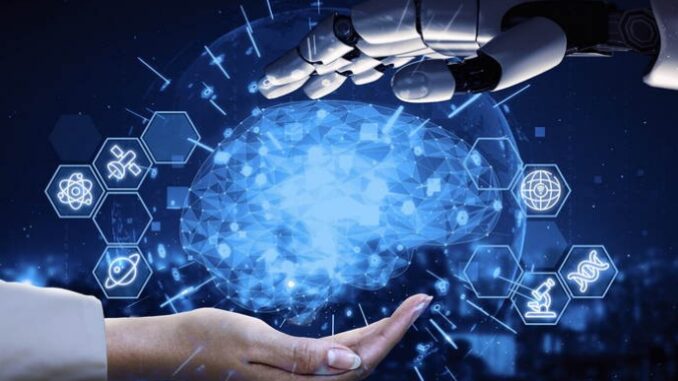
Machine learning algorithms are at the core of AI, enabling systems to learn from data, make predictions,
and improve over time. Here are some of the key machine learning algorithms and their applications in AI:









1. Supervised Learning
Supervised learning algorithms are trained on labeled data, where the input-output pairs are known. They are used for classification and regression tasks.
a. Classification Algorithms
Logistic Regression: A linear model used for binary classification tasks. It predicts the probability that a given input belongs to a particular class.
Support Vector Machines (SVM): Uses a hyperplane to separate different classes in the feature space. Effective in high-dimensional spaces.
k-Nearest Neighbors (k-NN): A non-parametric method that classifies a sample based on the majority class of its k-nearest neighbors.
Decision Trees: A tree-like model where each internal node represents a decision based on a feature, and each leaf node represents a class label.
Random Forests: An ensemble method that constructs multiple decision trees and merges them to obtain a more accurate and stable prediction.
Gradient Boosting Machines (GBM): Builds models sequentially, with each new model correcting errors made by the previous ones. Examples include XGBoost, LightGBM, and CatBoost.
Neural Networks: Composed of layers of interconnected nodes (neurons) that can model complex relationships between inputs and outputs. Deep neural networks are particularly powerful for tasks such as image and speech recognition.
b. Regression Algorithms
Linear Regression: Models the relationship between a dependent variable and one or more independent variables using a linear function.
Ridge and Lasso Regression: Variations of linear regression that include regularization terms to prevent overfitting.
Polynomial Regression: Extends linear regression by fitting a polynomial equation to the data.
Support Vector Regression (SVR): Uses the principles of SVM for regression tasks, predicting continuous values.
Neural Networks: Can also be used for regression tasks, especially when dealing with complex, non-linear relationships.
2. Unsupervised Learning
Unsupervised learning algorithms are used to find patterns or structure in unlabeled data. They are commonly used for clustering and dimensionality reduction.
a. Clustering Algorithms
k-Means: Partitions the data into k clusters, where each data point belongs to the cluster with the nearest mean.
Hierarchical Clustering: Builds a hierarchy of clusters by either iteratively merging small clusters into larger ones (agglomerative) or splitting large clusters into smaller ones (divisive).
DBSCAN (Density-Based Spatial Clustering of Applications with Noise): Forms clusters based on the density of data points, making it effective for identifying clusters of varying shapes and sizes.
Gaussian Mixture Models (GMM): Assumes that the data is generated from a mixture of several Gaussian distributions, each representing a different cluster.
b. Dimensionality Reduction Algorithms
Principal Component Analysis (PCA): Reduces the dimensionality of the data by transforming it into a new set of orthogonal components, ordered by the amount of variance they explain.
t-Distributed Stochastic Neighbor Embedding (t-SNE): Reduces the dimensionality of data while preserving the pairwise distances between data points, making it useful for visualization.
Autoencoders: Neural networks used to learn a compressed representation of the input data, often used for dimensionality reduction and feature learning.
3. Semi-Supervised Learning
Semi-supervised learning algorithms leverage both labeled and unlabeled data for training, often resulting in improved performance when labeled data is scarce.
Self-Training: Uses a supervised learning model to label the unlabeled data, which is then added to the training set for further training.
Co-Training: Trains two models on different views of the data and uses each model’s predictions to label the unlabeled data for the other model.
Generative Adversarial Networks (GANs): Can be adapted for semi-supervised learning by combining a generative model with a discriminative model.
4. Reinforcement Learning
Reinforcement learning involves training an agent to make decisions by rewarding desired behaviors and punishing undesired ones.
Q-Learning: A model-free algorithm that learns the value of actions in states to maximize cumulative reward.
Deep Q-Networks (DQN): Combines Q-learning with deep neural networks to handle high-dimensional state spaces, such as images.
Policy Gradient Methods: Learn the policy directly by optimizing the expected reward, examples include REINFORCE and Proximal Policy Optimization (PPO).
Actor-Critic Methods: Combine value-based and policy-based methods, where the actor updates the policy and the critic evaluates it.
5. Transfer Learning
Transfer learning involves transferring knowledge from one domain to another, reducing the need for large labeled datasets in the target domain.
Fine-Tuning Pretrained Models: Using models pretrained on large datasets (e.g., ImageNet for vision tasks, BERT for NLP tasks) and fine-tuning them on the specific target task.
6. Self-Supervised Learning
Self-supervised learning leverages the data itself to generate labels, often by predicting parts of the data from other parts.
Contrastive Learning: Learns representations by contrasting positive pairs (similar items) with negative pairs (dissimilar items).
Masked Language Modeling: Used in models like BERT, where parts of the input text are masked, and the model learns to predict the missing parts.
Conclusion
Advancements in machine learning algorithms continue to drive the field of AI forward, enabling more powerful, efficient, and versatile systems. These algorithms are applied across various domains, from computer vision and natural language processing to healthcare and finance, transforming industries and improving our understanding and interaction with complex data.

Leave a Reply